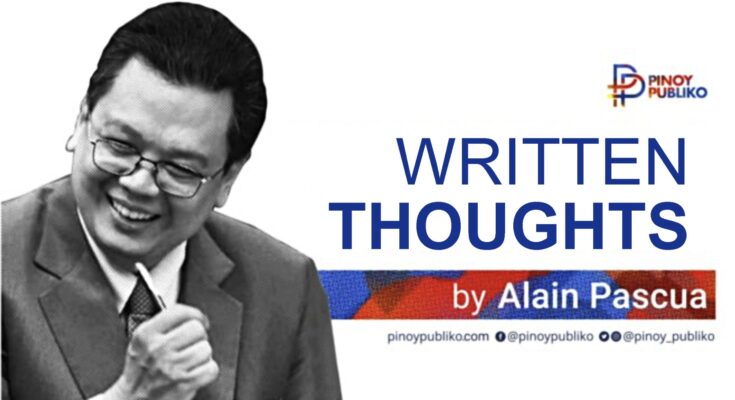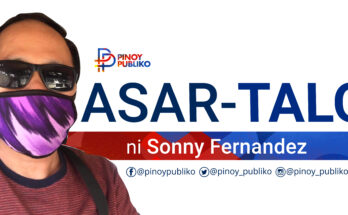I have read Gat Jose Rizal’s books Noli Me Tangere (Noli) and El Filibusterismo (Fili) several times, but I must confess that I read them within the usual dichotomy of reform/assimilation versus revolution/secession.
After reading Floro Quibuyen’s foreword in the Filipiniana Clasica Jose Rizal El Filibusterismo Critical Edition titled “El Filibusterismo: A Cautionary Tale for the 21st Century,” I now have a new framework – El Filibusterismo is Ang Terorismo. Quibuyen made it clear that Rizal did not kill Ibarra-Simoun because Rizal opposed the revolution that Ibarra-Simoun supposedly advocated.
Ibarra-Simoun advocated terrorism in Fili, and that is why Rizal killed him, not the revolution. Rizal was actually for the revolution as advocated by Elias in Noli and Padre Florentino in Fili. What was advocated by Elias? Rizal wrote in Noli about Elias speaking to Ibarra: ” Alone, it is true, we are nothing, but take up the cause of the people, unite yourself with the people, be not heedless of their cries, set an example to the rest, spread the idea of what is called a fatherland.”
I just realized that even before Mao Zedong or Chen Yun wrote their policies for the cadres of their revolution in China, Rizal had already written down the Filipino cadre policy in Noli.
We have read, discussed and internalized Chen Yun’s Our Cadre Policy as a guide for activism and revolutionary movement without knowing that our very own Rizal has already laid down a five-point guide for Filipino leaders and cadres: 1) seize the people’s cause, 2) unite with the people, 3) do not be heedless of the cries of the people, 4) be an example to the others, and 5) spread the idea of what is called fatherland.
And did Rizal speak of the revolutionary character? When Simoun spoke about his father and Elias, Rizal said in Fili: “And thou, noble spirit, great soul, generous heart xxx.” Add that to what Rizal said to Jose Alendrino, as mentioned by Quibuyen, that defines that character with great clarity: “I regret having killed Elias instead of Cristomo Ibarra; but when I wrote the Noli Me Tangere, my health was badly broken and I never thought that I would be able to write its sequel and speak of a revolution.
Otherwise, I would have preserved the life of Elias, who was a noble character, patriotic, self-denying and disinterested – necessary qualities in a man who leads a revolution xxx.” Thus, by Rizal’s definition, a revolutionary leader must be 1) of noble character, 2) patriotic, 3) self-denying and disinterested (unselfish), and 4) generous of heart. Oxford defines “disinterested” as “not influenced by considerations of personal advantage”.
When Ibarra-Simon was dying, he asked in Fili, “Why then has He (God) denied me His aid?” To which Rizal, thru Padre Florentino, said, “Because you chose means that He could not sanction… Redemption presupposes virtue, virtue sacrifice, and sacrifice love! … You fostered the social rottenness without sowing an idea.” Padre Florentino continued, ” Suffer and work! We must secure Liberty (Freedom, Independence) by making ourselves worthy of it, by exalting intelligence and the dignity of the individual, by loving justice, right, and greatness, even to the extent of dying for them – and when a people reaches that height God will provide a weapon, the idols will be shattered, the tyranny will crumble like a house of cards and liberty will shine out like the first dawn.”
Rizal outlined the path to independence and liberation – love, sacrifice and virtue. He outlined the preparations to achieve independence: 1) we must prove ourselves worthy of freedom, 2) uphold the intelligence and dignity of the individual, 3) love and die for justice, right and greatness, and 4) suffer and work.
And what is the idea to be sown? Spread the idea of what is called fatherland. Build the Filipino nation. Develop the Filipino identity. Noli Me Tangere was published in 1887, El Filibusterismo came out in 1891. The Kataastaasan Kagalanggalang Katipunan ng mga Anak ng Bayan (KKK or Katipunan) was established in 1892 with a founding document Kasaysayan, Pinagkasunduan, Mga Dakilang Kautusan (http://www.kasaysayan-kkk.info/). Quibuyen sees this as the first declaration of independence of the Filipino people, and I fully agree with him because it was the time when the people came together as a nation and freed themselves from the shackles of colonialism.
The formation of a nation started with the liberation of their consciousness by themselves, that was the beginning of the revolution, and their “ating matapang at mairuguing kapatid na si” Rizal was their inspiration. Quibuyen also argues that the founding document established the historical justification and moral foundation of the revolution.
He said it was as if the founding members of the Katipunan followed the advice of Elias and Padre Florentino.
Indeed, they did. In 1896, Andres Bonifacio wrote Dekalogo (Katungkulang Gagawin ng mga Anak ng Bayan) but gave way to Emilio Jacinto’s Kartilya ng Katipunan (Sa May Nasang Makisanib sa Katipunang Ito).
These documents embodied Rizal’s fatherland, revolution, and characteristics of a revolutionary. In 1898, Apolinario Mabini presented The True Decalogue, in which he revisited the ideals espoused by Rizal and clearly expressed not only in his two novels but also in his other writings such as the notes to Morgas Sucesos de las Islas Filipinas, The Indolence of the Filipinos, and Filipinas, A Century Hence.
If we place today’s national slogan and the Department of Education’s core values of Maka-Diyos, Makatao, Makabansa and Makakalikasan (which are also instituted in the great seal of the country) in a historical context by relating them to the works of Rizal, Bonifacio, Jacinto, Mabini, del Pilar and other founding fathers and revolutionaries, we can see and understand the kind of revolution that is necessary for the building of the motherland and the development of the consciousness and identity of the people.
Now I fully understand why the writings of our heroes are primarily anchored on the value of maka-Diyos, even though they were branded as Erejes (heretics) by the church hierarchy. They have all responded to the calls of Rizal, who spoke through Padre Florentino in Fili and have fully understood the essence of their revolution. Our forefathers transcended the boundaries of religion and strengthened their faith in the Almighty beyond the confines of the friarocracy or religion itself, which they considered an instrument of colonization and oppression at that time.
And that is what is unique about the formation of their Filipino consciousness, even though Marxism was already flooding Europe during the propaganda movement at the time they studied there. It is an interesting topic for further study that the Philippine Revolution of 1896 may have been based on a concept of liberation theology, a century before the same idea became popular in Latin America. It is very surprising that Rizal’s hero in Fili, which he dedicated to the three martyr priests Padre Gomez, Burgos and Zamora, is another priest – Padre Florentino, as he combatted the oppressive friars, all supposed instruments of God.
Having been captivated by the recent GMA telenovela “Maria Clara at Ibarra,” we should read the books Noli and Fili on which it is based, and enjoy Rizal’s treatise on his arguments against the Spanish conquest and his struggle for the nascent independent Filipino nation.
The telenovela has inspired us, and that should stimulate the inquisitive mind to engage with the ideas of Rizal, without the kiligs, Marites, babus and other limitations or the liberality of modern adaptations and artistic interpretations.
Let us read again Noli and Fili, the unabridged versions, with the perspective and framework in which Rizal advocates a revolution to found a fatherland.
Let us read again the works of Bonifacio, Jacinto, Mabini, del Pilar and the others of our founding fathers with the same perspective. Let us find out the character of the Philippine Revolution and the revolutionaries who will carry it out, and let us find out the difference between revolution, terrorism and assimilation.
Our forefathers understood this well enough, so we must too. Teachers who teach Rizal subjects must be able to discuss and communicate Rizal’s ideas for the emerging Filipino nation to their students. As with the telenovela, teachers must be able to bridge the gap between understanding the strict English and Filipino translations of the Spanish original while successfully relaying dialogues and arguments in today’s language for easier and better understanding by the present generation.
***
Alain Pascua is a former education undersecretary.





